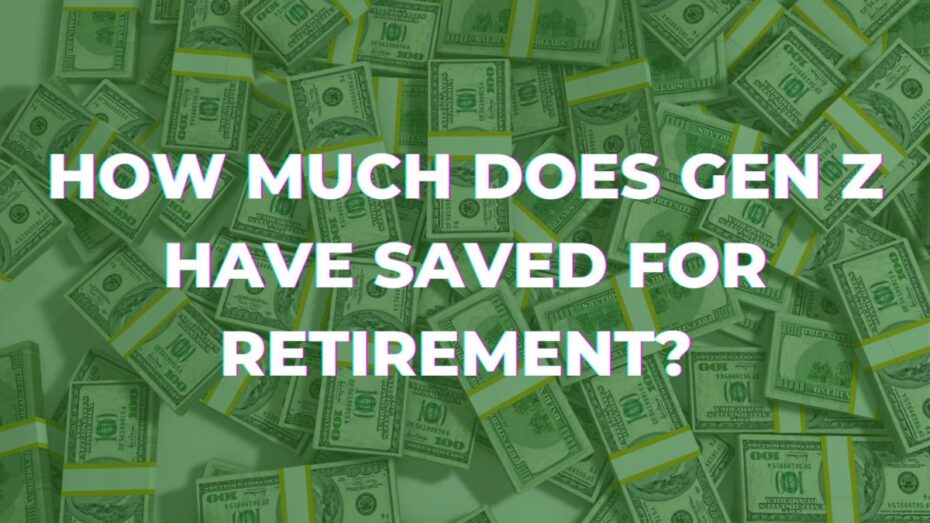Gen Z Is Doing A Better Job Saving For Retirement Than Millennials – Here’s By How Much

Gen Z might catch some flack for being “the TikTok generation”, but it seems like they’re giving good ol’ millennials a run for their money when it comes to thinking about retirement.
While the millennials were all about avocado toast, dream trips to Iceland and Mexico City with their friends, and Instagramable brunches, Gen Z – or people born between 1997-2012 – are more focused on financial stability and saving up for their golden years.
The TransAmerica Center for Retirement Studies recently published a study analyzing generational attitudes about retirement savings.
They found that Gen Z, compared to millennials and Gen X, is way ahead of the pack when it comes to saving for the future. This is promising news, considering that Gen Z has decades in the workforce to continue racking up their savings.
How much does Gen Z have saved for retirement?
According to the study, Gen Z is already crushing the retirement savings game with a whopping 67% of them stashing their cash in 401(k) plans or other retirement accounts. Compared to the millennial generation, who began saving at age 25 out of woes from the Great Recession, they’re starting at the ripe young age of 19.
The study also found that Gen Z contributes a median of 20% of their annual pay to their retirement funds. Additionally, the study found that Gen Z has saved an estimated $33,000 in their household retirement accounts.
Another interesting finding: While Gen Z is building up retirement portfolios, they aren’t exactly stashing away a lot of cash for unexpected expenses: They only have a median of $2,000 in emergency savings.
As the saying goes, with age comes wisdom. Perhaps Gen Z just hasn’t experienced the financial pain of having to pay out of pocket for a root canal yet?
Why is Gen Z crushing it when it comes to saving for retirement?
A big difference between the two generations lies in their upbringing and the economic climate they’ve grown up in.
Millennials came of age during the Great Recession and faced a tough job market, leading them to prioritize “do it for the ‘Gram” experiences over settling down and saving for the future.
In contrast, Gen Z entered the workforce just before the beginning of the pandemic. They also witnessed the aftermath of the recession, making them more aware of the importance of financial security.
Additionally, they were able to save money big time by living at home in the pandemic, contributing that money to their nest egg.
They are also digital natives growing up in a social media world, which has lead Gen Z to be more entrepreneurial and tech-savvy than their predecessors. This has enabled them to take control of their finances and invest in their future. Think: Sneaker and clothes reselling side hustles or building up a monetizable YouTube channel.
Are millennials leaving themselves in the dust for retirement savings?
Getting a late start a saving for retirement certainly didn’t help the millennial generation, born between 1981 and 1996.
A study from Parsons Capital found that the average American millennial has about $166,430 set aside for retirement.
This new study by the TransAmerica Center for Retirement Studies, however, found a much different portrait of millennial retirement savings.
While the study found that 76% of Millennial workers are already saving for retirement, the median household retirement savings for this generation is only about $50,000.
That’s a massive $115,000 difference between the Parsons Capital study.
Millennials also don’t have a ton of cash stashed away for emergency savings – the median savings for an emergency is just $3,000.
The TransAmerica Center study also found that three in four millennials in the workforce are putting their money into 401(k)s or other similar plans when it’s offered, as well as saving outside the workplace. Those participating in 401(k) plans or the like are contributing a median of 15% of their annual pay towards their retirement funds.
Another key finding in the study: Millennials are a little more uneasy about the future. In fact, 73% of them are concerned that Social Security won’t be there for them when they’re ready to retire.
Can you blame them? Experts have been saying this retirement income program for American workers is going to run out for practically their entire lives.
The study found that 52% are counting on self-funded savings to provide their primary source of retirement income. This includes 401(k)s, 403(b)s, and IRAs (40%), as well as other savings and investments (12%).
One other major concern for millennials is their aging parents and family members, with many millennials in the study citing this expense can impact their upward mobility in the employment market and ability to save for retirement. Around 42% of Millennial workers have either served or are currently serving as caregivers for a relative or friend while also working.
In conclusion
According to the study, most American workers’ top financial priority is saving for retirement, with 56 percent of respondents citing it as their main focus. At the moment, Baby Boomers (70 percent) and Generation X (66 percent) are more likely to prioritize retirement savings than Millennials (48 percent) and Generation Z (35 percent).
But people are concerned about where they’re at. More than half of workers in the study (51 percent) agree with the statement “I don’t have enough income to save for retirement.” Generation Z (57 percent), Millennials (56 percent), and Generation X (52 percent) are significantly more likely to agree than Baby Boomers (39 percent).
Fortunately for Gen-Z, they have a big head start and many years to keep contributing.
As laid out above, $33,000 saved for retirement before anyone in the generation hits 30 is a pretty nice foundation to build upon.